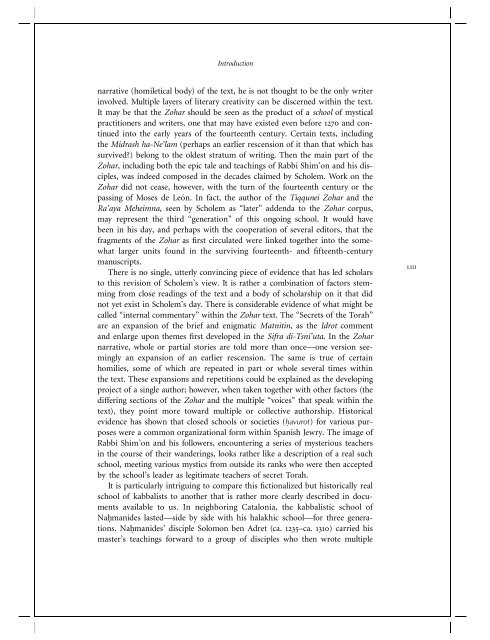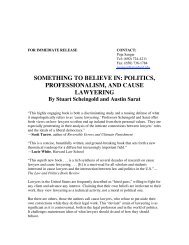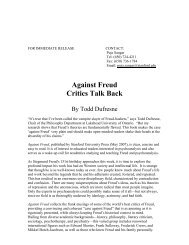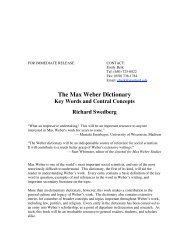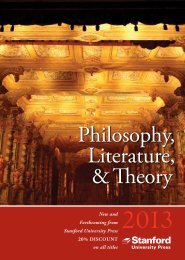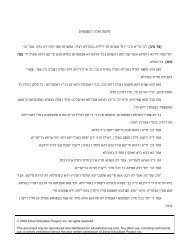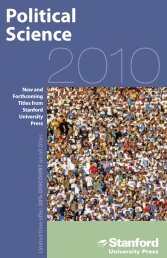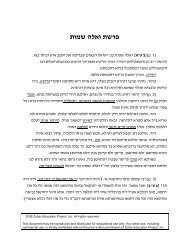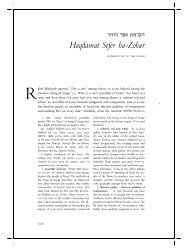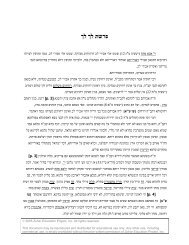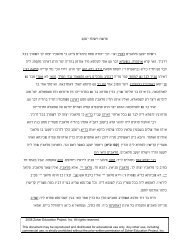Front Matter (PDF) - Stanford University Press
Front Matter (PDF) - Stanford University Press
Front Matter (PDF) - Stanford University Press
Create successful ePaper yourself
Turn your PDF publications into a flip-book with our unique Google optimized e-Paper software.
(homiletical body) of the text, he is not thought to be the only writer<br />
narrative<br />
Multiple layers of literary creativity can be discerned within the text.<br />
involved.<br />
may be that the Zohar should be seen as the product of a school of mystical<br />
It<br />
and writers, one that may have existed even before 1270 and con-<br />
practitioners<br />
into the early years of the fourteenth century. Certain texts, including<br />
tinued<br />
Midrash ha-Ne'lam (perhaps an earlier rescension of it than that which has<br />
the<br />
belongto the oldest stratum of writing. Then the main part of the<br />
survived?)<br />
includingboth the epic tale and teachings of Rabbi Shim'on and his dis-<br />
Zohar,<br />
was indeed composed in the decades claimed by Scholem. Work on the<br />
ciples,<br />
did not cease, however, with the turn of the fourteenth century or the<br />
Zohar<br />
Moses de LeoÂn. In fact, the author of the Tiqqunei Zohar and the<br />
passingof<br />
Meheimna, seen by Scholem as ``later'' addenda to the Zohar corpus,<br />
Ra'aya<br />
represent the third ``generation'' of this ongoing school. It would have<br />
may<br />
in his day, and perhaps with the cooperation of several editors, that the<br />
been<br />
of the Zohar as ®rst circulated were linked together into the somewhat<br />
fragments<br />
larger units found in the surviving fourteenth- and ®fteenth-century<br />
manuscripts.<br />
is no single, utterly convincing piece of evidence that has led scholars<br />
There<br />
this revision of Scholem's view. It is rather a combination of factors stemmingfrom<br />
to<br />
close readings of the text and a body of scholarship on it that did<br />
yet exist in Scholem's day. There is considerable evidence of what might be<br />
not<br />
``internal commentary'' within the Zohar text. The ``Secrets of the Torah''<br />
called<br />
an expansion of the brief and enigmatic Matnitin, astheIdrot comment<br />
are<br />
enlarge upon themes ®rst developed in the Sifra di-Tsni'uta. IntheZohar<br />
and<br />
whole or partial stories are told more than onceÐone version seemingly<br />
narrative,<br />
an expansion of an earlier rescension. The same is true of certain<br />
some of which are repeated in part or whole several times within<br />
homilies,<br />
text. These expansions and repetitions could be explained as the developing<br />
the<br />
of a single author; however, when taken together with other factors (the<br />
project<br />
of the Zohar and the multiple ``voices'' that speak within the<br />
differingsections<br />
they point more toward multiple or collective authorship. Historical<br />
text),<br />
has shown that closed schools or societies (ḥavurot) for various pur-<br />
evidence<br />
were a common organizational form within Spanish Jewry. The image of<br />
poses<br />
Shim'on and his followers, encounteringa series of mysterious teachers<br />
Rabbi<br />
the course of their wanderings, looks rather like a description of a real such<br />
in<br />
meetingvarious mystics from outside its ranks who were then accepted<br />
school,<br />
the school's leader as legitimate teachers of secret Torah.<br />
by<br />
is particularly intriguing to compare this ®ctionalized but historically real<br />
It<br />
of kabbalists to another that is rather more clearly described in documents<br />
school<br />
available to us. In neighboring Catalonia, the kabbalistic school of<br />
lastedÐside by side with his halakhic schoolÐfor three generations.<br />
Naḥmanides<br />
Naḥmanides' disciple Solomon ben Adret (ca. 1235±ca. 1310) carried his<br />
Introduction<br />
liii<br />
master's teachings forward to a group of disciples who then wrote multiple


